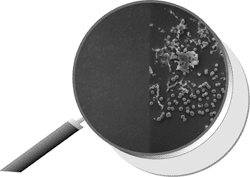Written by: Denton Vacuum, LLC
Medical devices are an important component to long term patient care. Devices that fit into a patient’s body present a number of complications, especially when it comes to infections. A patient’s comfort level can be improved too. Medical device coatings have revolutionized the industry, with anti-microbial coatings offering some of the safest options for devices that fit into the body. Catheters and stints run a lower risk of infection now because of improvements in the manufacture of medical devices.
How Anti-Microbial Coatings Work
When a catheter is inserted into the body, it creates an opening for microorganisms to grow. That’s just one example of a host of devices that can cause serious complications in a person’s immune system. Those microorganisms, like bacteria, can infect someone and complicate the healing process. Anti-microbial coatings are useful to sterilize medical devices, which protect against microorganisms clinging to the clothes and linens of hospital staff and patients. These coatings create a surface where the microorganisms cannot grow.
New Kinds of Coating
Anti-microbial coatings were made from chemicals, but there has been a recent discovery that metals like copper are naturally anti-microbial in nature. This means copper surfaces stay cleaner for longer, and copper and its alloys have properties that destroy microorganisms. Copper is especially effective in destroying E. coli and the organisms responsible for staph infections.
Diamond like carbon coating made from similar processes are already utilized heavily in medical machinery and surgical equipment. These coatings help maintain the clean environment doctors depend on, and they contribute to longer lasting equipment.
Coating Devices
The process to coat devices begins with the substrate, which is the device itself. Chemicals are broken down with intense heat during a process known as plasma-enhanced chemical vapor deposition. This process places the substrate into a chamber with a temperature that is highly regulated. The chemicals break down into gaseous particles, only to settle on the substrate as the vacuum-sealed chamber is cooled. The substrate is often rotated during this process, so the device receives an even coating.
Other Uses for Anti-Microbial Coating
This type of coating is widely used in the medical industry, but has found some niche uses outside of that field. The chemicals used in anti-microbial coatings can easily be altered to deter microorganisms from even inhabiting a surface. This can be useful in clean rooms, where micro chips are manufactured. It’s also used at a smaller scale in some types of air and water purification.

